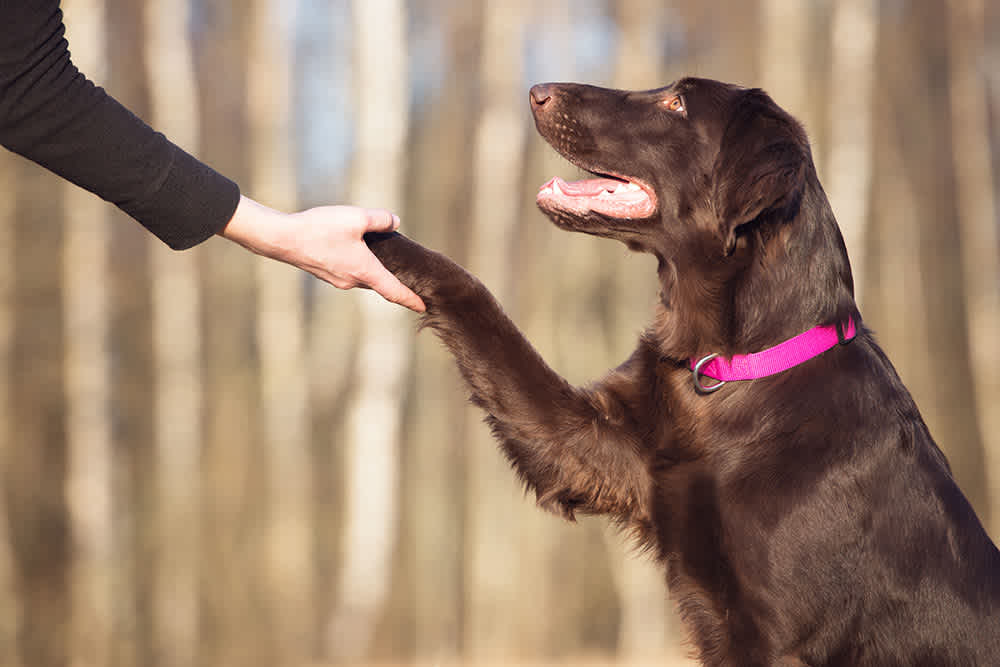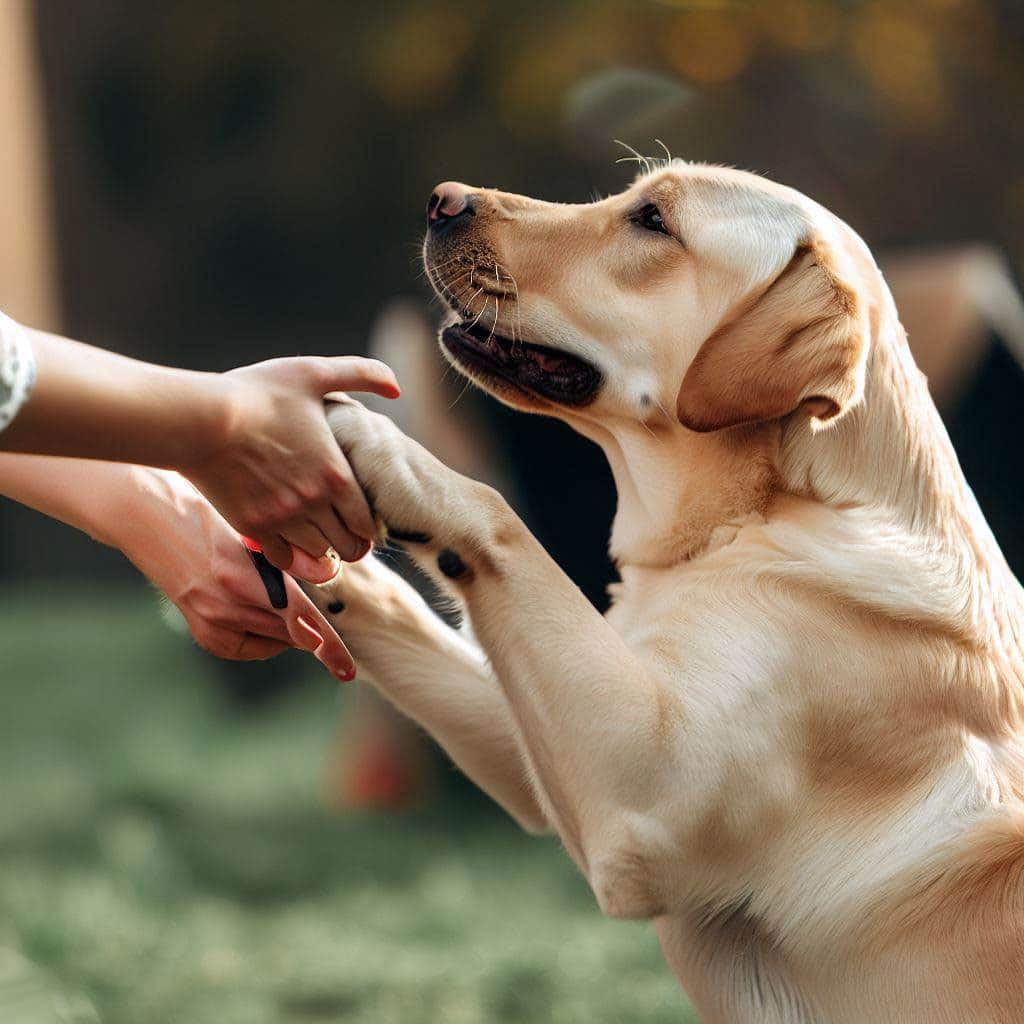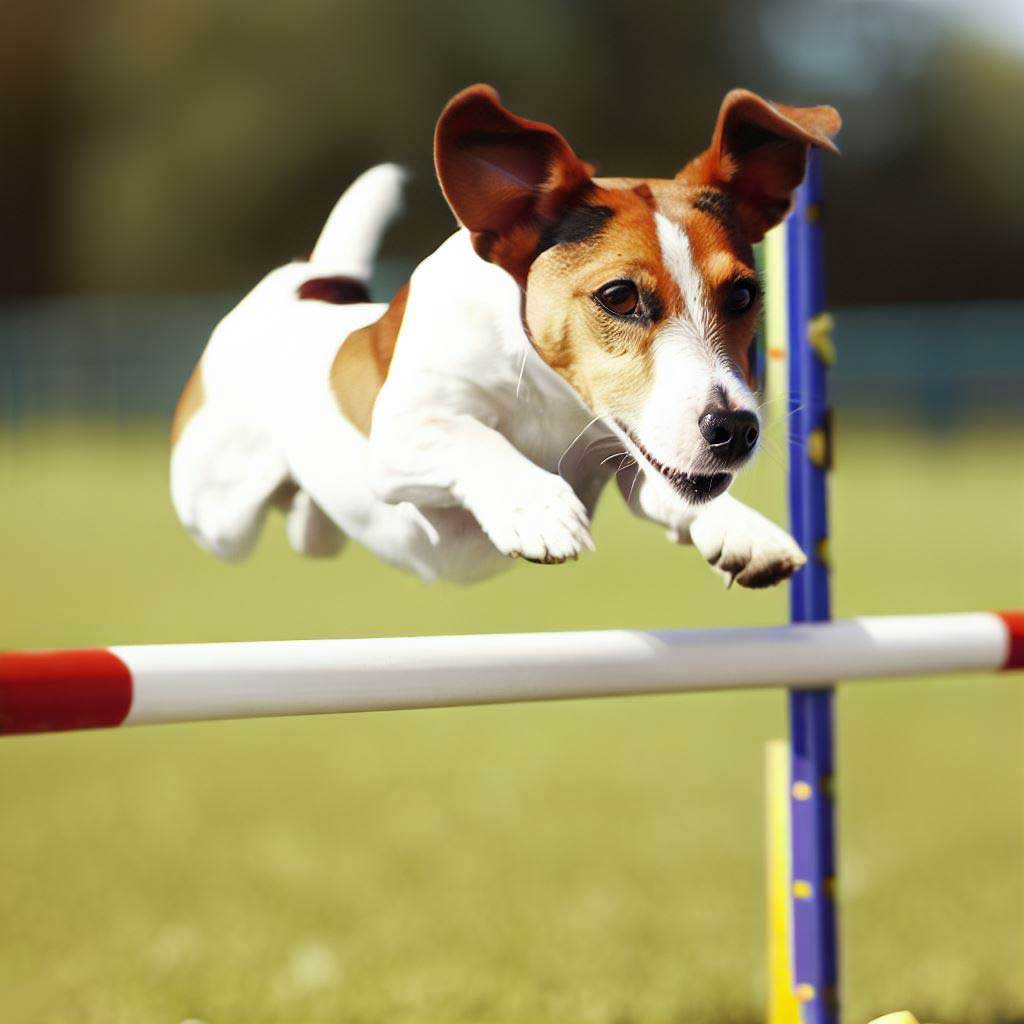What Is The Importance of Dog Training?
Importance Of Dog Training – Why Dog Obedience is Important. Discover how training shapes behavior and fosters a loving bond.
Table of Contents
Importance of Dog Training: Introduction
Dog training and understanding the importance of dog training is an essential and rewarding part of pet ownership. It’s not just about teaching your furry friend to perform tricks or adhere to house rules.
It is a comprehensive process involving communication, bonding, and understanding, forming an essential foundation for a harmonious relationship between you and your canine companion.
We can’t emphasise enough the importance of dog training your beloved pooch. It helps to establish boundaries, making your dog aware of what behaviors are acceptable and what aren’t.
Good training can help curb destructive habits and ensure safety, not only for your pet but also for those interacting with them. This is particularly crucial in public spaces and when dealing with children or strangers.
One of the significant benefits of dog training is that it improves communication between you and your pet. It offers you a unique insight into your dog’s mind, helping you understand their cues and signals better. This leads to a deeper bond, mutual respect and a much easier existence for you both in your home.
Mental Stimulation
Furthermore, training provides mental stimulation, a crucial component of a dog’s overall well-being. Just like humans, dogs need tasks and challenges to keep them mentally sharp. Training exercises, whether they are obedience drills or agility activities, offer just that.
In addition to mental stimulation, training is a great form of physical exercise for dogs. Whether it’s teaching them to fetch, leap over hurdles, or just heel during a walk, it all contributes to their physical health and energy management.
Behavioral Issues
Training also significantly aids in addressing behavioral problems. Issues such as incessant barking, chewing, or even aggression can often be remedied or mitigated through structured, consistent training.
Lastly, a well-trained dog is generally a happier dog. Knowing what is expected of them and being able to communicate with you contributes to a more content and confident pet.
Knowing the importance of dog training goes beyond the basics of sit, stay, or fetch. It’s about nurturing a relationship of understanding, respect, and mutual love with your four-legged family member.
This ultimately leads to a more satisfying and harmonious coexistence for you both, so let’s delve a little deeper on the topic.

Importance of Dog Training: When to Start Training
Training is a crucial part of any dog’s life. It’s the key to ensuring your dog is well-behaved, confident, and happy. We recommend starting as early as possible, at puppy stage, as it provides an excellent opportunity to shape behaviors and build a strong bond with your furry companion.
Puppy training can usually start as early as 7-8 weeks old. At this age, puppies are extremely impressionable and can absorb a lot of information.
Simple commands like “sit”, “stay”, or “come”, as well as leash and potty training, can be introduced. Training them at this stage plays an instrumental role in establishing a foundation for good behavior and preventing the development of problematic habits.
The benefits of early training are numerous. Not only does it foster a puppy’s cognitive development, but it also aids in their socialization. Puppies exposed to different environments, people, and other animals at a young age are generally more sociable and less likely to exhibit fear or aggression.
What about Older Dogs?
However, what if your dog is already past the puppy stage? Can you still train them?
The answer is a resounding yes. Dogs of any age can learn new behaviors and commands. This includes senior dogs who may have never undergone formal training before.
Training an older dog may require a bit more patience and consistency, as they may have already established certain behaviors and habits.
However, it is by no means an impossible task. Knowing the importance of dog training with the right training techniques and an understanding approach, you can teach your old dog new tricks.
The key is to remain patient, consistent, and positive throughout the training process.
Remember, older dogs might take a little longer to adjust to new routines or commands, but with time and persistence, they can certainly learn and adapt.
Whether early or later in a dog’s life, training your pooch is integral for a balanced and harmonious cohabitation. It not only contributes to a dog’s mental and emotional well-being but also to their physical health.
The phrase ‘you can’t teach an old dog new tricks’ is simply not true; with love, patience, and the right training strategies, dogs of all ages can learn and thrive in your home. And you will be much happier for it as well.

Easiest Dogs to Train
Several factors contribute to a dog’s trainability, including their breed, temperament, intelligence, and eagerness to please their owners. Breeds with high levels of intelligence and a strong desire to work alongside humans generally tend to be easier to train.
Easier Breeds to Train
In our experience and from the feedback that we have received from you, our readers, here are the top ten breeds that are relatively easy to train:
Border Collie: Known as the Einstein of the dog world, Border Collies are highly intelligent and eager to please, making them very trainable.
Poodle: Poodles are smart, active, and excel in obedience training. They are quick learners who enjoy mental stimulation.
German Shepherd: These dogs are known for their intelligence and versatility. They are often trained as service dogs due to their trainability.
Golden Retriever: This breed is eager to please, intelligent, and patient, making them excellent for training.
Doberman Pinscher: Dobies are highly intelligent and have a natural protective instinct. They respond well to consistent, positive reinforcement training.
Labrador Retriever: Labs are known for their intelligence, friendly nature, and eagerness to please, making them very trainable.
Shetland Sheepdog: Shelties are quick learners with a strong desire to please, factors that make training easier.
Papillon: These dogs are intelligent, eager to learn, and respond well to positive reinforcement training.
Rottweiler: Rotties are intelligent and willing to work, making them suitable for many types of training.
Australian Cattle Dog: These dogs are intelligent, energetic, and eager to work, all traits that contribute to easy training.
Harder Breeds to Train
On the other hand, some breeds can be challenging to train due to their strong-willed or independent natures. These include:
Afghan Hound: Known for their independent and sometimes aloof nature, Afghans can be hard to train.
Basenji: Often called the “barkless dog,” Basenjis are very independent and can be stubborn during training.
Bulldog: Bulldogs can be quite stubborn, and their laid-back nature can make training a challenge.
Chow Chow: Chows are known for their aloof and independent nature, making them more challenging to train.
Borzoi: This breed is intelligent but highly independent, often preferring to do things their own way.
Beagle: While intelligent, Beagles are scent hounds and can be easily distracted by smells, making training a bit challenging.
Shih Tzu: Whilst loveable and full of personality, Shih Tzu’s can be very stubborn at times, which may make training more difficult.
Basset Hound: Bassets with a relaxed and carefree disposition are known for their stubborn nature and can be challenging to train.
Mastiff: Mastiffs are intelligent but also independent, and they can be a bit stubborn during training.
Dachshund: While intelligent, loveable and very cute, Dachshunds are independent and can be stubborn, which may make training a challenge.
The ease or difficulty in training a dog can be breed-dependent, but remember, every dog is an individual. Understanding the importance of dog training executed with consistent, positive reinforcement methods work best, irrespective of the breed.
Don’t take the above list as complete ‘gospel’ either, because we have seen and experienced nearly every type of breed trained and trained well. Patience and consistentcy is key with all dog training.

Importance of Dog Training: Tips for Beginners
Training a dog can be a rewarding journey for both you and your furry companion. Here are some tips to get you started:
Firstly, acknowledging the importance of dog training, understanding dog behavior and communication is crucial.
Dogs communicate through body language, barks, and whines. Familiarize yourself with common signals dogs use, like wagging tails, raised hackles, or pinned back ears. Observing and understanding these signs can help you respond better to your dog’s needs.
The mindset you bring to the training process is crucial.
Patience, consistency, and positivity are essential for successful dog training. Training can take time, and results might not be instant.
It’s important to remain patient and consistent with your training methods. Positivity goes a long way in dog training.
Always reward good behavior with treats, praises, or petting to reinforce the behavior.
There are various training tools and aids available for beginners, including clickers, training collars, harnesses, and treat pouches.
Remember, these tools should aid in positive reinforcement training, not punishment.
Here are some general tips for successful dog training:
- Begin with basic commands like ‘sit’, ‘stay’, ‘come’.
- Use short, clear commands.
- Keep training sessions short but frequent to maintain your dog’s attention.
- Always end sessions on a positive note, ensuring your dog associates training with a pleasant experience.
Challenges during training are normal. If a certain technique isn’t working, try a different approach.
If your dog seems overly anxious or distracted, it might not be the best time for training. Don’t hesitate to consult a professional dog trainer if you’re facing persistent challenges. They can provide valuable insights and techniques tailored to your dog’s specific needs.
Remember, dog training is a journey, not a destination. Enjoy the process as you and your dog learn and grow together.
Importance of Dog Training: Older Dogs
Training older dogs differs somewhat from training puppies. While puppies are like blank slates ready to learn new behaviors, older dogs may have established habits and behaviors that could take longer to change.
However, it’s important to remember the saying, “you can teach an old dog new tricks.” It’s never too late to start training.
When training an older dog, patience and understanding are paramount. It might take an older dog more time to grasp new concepts or break existing habits. They might not have the same energy levels as a younger dog, so you need to adjust your training methods and expectations accordingly.
One of the challenges in training older dogs can be their ingrained behaviors. Older dogs may also have health issues like arthritis or hearing loss that can affect their ability to participate in certain types of training.
Overcoming these challenges involves adjusting your training strategies to accommodate your dog’s physical abilities and comfort levels. Always consult with a vet if health issues are affecting your dog’s training.
When it comes to tips and techniques, positive reinforcement is the key.
Reward your dog for correct behavior with treats, praise, or a favorite toy. Break down training into smaller, manageable steps to help your older dog understand and learn. Avoid overwhelming them with too many commands at once.
Just as with any dog, understanding the importance of dog training followed by consistency of yor actions is crucial. Keep the training rules the same to avoid confusing your dog. Make sure everyone in the household is on the same page about the dog’s training.
Lastly, remember that training is an opportunity to strengthen the bond between you and your dog. Make the process enjoyable and rewarding for your older dog, ensuring they associate training with positive experiences.
Importance of Dog Training: Common Mistakes
Training a dog is a rewarding endeavor, but it’s not without its challenges. Whether you’re training a young pup or an older dog, being aware of common mistakes can significantly improve your effectiveness.
Inconsistent Commands: Inconsistency can confuse dogs. Whether it’s different commands for the same behavior or inconsistent enforcement, such inconsistency can delay progress in training. Ensure everyone involved in the dog’s care uses the same commands and maintains the same rules.
Punishment-Based Training: Punishing your dog for undesirable behavior can instill fear and anxiety, leading to problematic behaviors and a damaged relationship. Instead, focus on positive reinforcement, rewarding good behavior and ignoring or redirecting undesirable actions.
Long Training Sessions: Dogs, particularly puppies, have short attention spans. Long, drawn-out training sessions can lead to frustration and lack of interest. Break up training into shorter, more frequent sessions.
Delaying Training: Some people think training should only start when the dog is older. However, early training helps prevent the development of undesirable habits. Start training as soon as your pup is comfortable in their new home.
Expecting Immediate Results: Training is a process, and expecting immediate results can lead to disappointment and impatience. It takes time for dogs to learn and consistently follow commands.
Not Socializing Your Dog: A common mistake is neglecting to socialize dogs with other people and animals. Socialization helps dogs develop a balanced temperament and reduces fear or aggression.
To avoid these mistakes, stay patient and consistent in your approach. Use positive reinforcement methods, keep training sessions short and engaging, and start training early.
Remember, each dog is unique and may require individualized training strategies. If you encounter persistent challenges, don’t hesitate to reach out to a professional dog trainer for advice.

Conclusion
Training your canine companion, whether a sprightly puppy or a mature dog, can be a rewarding journey that strengthens the bond between you two.
Understanding their behavior and communication, consistent positive reinforcement, and early training all play crucial roles in shaping your dog’s obedience and demeanor.
Remember, while breeds like Border Collies and Poodles are often quick learners, every dog, irrespective of breed, can be trained with patience and consistency.
If you’re a beginner, don’t be discouraged by the challenges.
The art of dog training is a dynamic dance of patience, dedication, and love. Every dog, from the eager puppy to the mellow senior, requires a unique blend of consistency and compassion. It’s an evolving journey where persistence plays a pivotal role, ensuring lessons become lifelong habits. Your heartfelt efforts, intertwined with routine, create a tapestry of trust and mutual respect.
But it’s natural for the journey to occasionally feel daunting. If ever the path seems foggy, turn to the digital realm for clarity. Online dog training courses offer guidance, and to ease your search, dive into “Best Online Dog Training Courses: Any Dog Will Love.” This gem explores 15 courses, highlighting the top three, ensuring you’re equipped to guide your canine companion with confidence.
With the right mindset, you can successfully navigate the training process, making it a positive and enriching experience for both you and your dog.
Avoid common mistakes like inconsistent commands and punishment-based training, and always ensure that your training sessions are fun and rewarding.
Whether you’re trying to teach your dog basic commands, curb undesirable behaviors, or even potty train your puppy, our expert dog training guide has got you covered.
Always remember, every dog is unique – so, tailor your training according to your furry friend’s needs and personality. Happy training!

FAQs: The Importance of Dog Training
What age should I start training my puppy?
Puppy training can begin as early as 7-8 weeks old. At this early stage, puppies are very receptive and can start learning basic commands like “sit”, “stay”, and “come”.
Can older dogs be trained?
Yes, older dogs can definitely be trained. Although it might require a bit more patience as they may already have established certain habits, dogs of any age can learn new behaviors and commands.
What are some of the easiest dogs to train?
Some of the easiest dogs to train include Border Collies, Poodles, German Shepherds, Golden Retrievers, and Labrador Retrievers. These breeds are known for their intelligence and eagerness to please their owners.
What is the best method for training my dog?
Positive reinforcement training is generally considered the most effective and humane method. This involves rewarding your dog for good behavior, which encourages them to repeat it.
How long should each training session be?
Training sessions should be short but frequent, as dogs, especially puppies, have a short attention span. Aim for 5-15 minutes per session, several times a day.
My dog is not responding to my commands. What am I doing wrong?
There could be various reasons. Your commands may not be clear or consistent enough, or you may not be rewarding your dog effectively for following them. Try simplifying your commands and using high-value treats as rewards.
Why is socialization important in dog training?
Socialization helps dogs learn how to interact safely and comfortably with other animals and people. It helps prevent fear and aggression, and promotes a well-rounded and confident demeanor.
What should I do if my dog misbehaves?
Rather than punishing your dog, which can create fear and anxiety, try to redirect their energy into something more positive or ignore the behavior. If the behavior is consistently problematic, consider seeking the help of a professional dog trainer.
How do I house-train my puppy?
Establish a routine for feeding and potty breaks. Always take your puppy out first thing in the morning, after meals, and before bedtime. Reward them when they do their business outside.
Is it necessary to use training tools like clickers or training collars?
Training tools can be useful aids, but they aren’t necessary for all dogs or situations. The best tool in training any dog is positive reinforcement, patience, and consistency.
Why is dog training so important?
Dog training is essential as it establishes clear communication between the owner and the dog. It sets boundaries, fosters a strong relationship, and enables the dog to comprehend what is expected of them. A well-trained dog is safer to have around and leads to a more fulfilling pet-ownership experience.
What happens if you don’t train your dog?
Without proper training, a dog may develop undesirable behaviors such as jumping, barking, or even aggression. Lack of training can result in misunderstandings between the owner and the dog, leading to frustration and potential safety concerns. An untrained dog is also more challenging to manage in public situations.
What is most important in training a dog?
Consistency, patience, and positive reinforcement are key factors in dog training. Establishing trust and a clear line of communication helps the dog understand what’s expected. Tailoring the training to the dog’s individual personality and needs ensures a more successful outcome.
What are the benefits of a dog trainer?
A professional dog trainer has the experience and knowledge to assess your dog’s behavior and create a customized training plan. They can provide consistent, methodical lessons, address specific behavioral issues, and help you understand your dog’s needs and responses better, making the training process more efficient.
What are the benefits of dog obedience training?
Dog obedience training promotes good behavior, enhances social skills, and strengthens the bond between the owner and the dog. It provides mental stimulation, reduces behavioral problems, and helps the dog respond accurately to commands, making daily life easier and more enjoyable.
Why should I get my dog trained?
Training your dog helps in preventing behavioral issues, enhances safety, and promotes a loving relationship between you and your pet. A trained dog is more manageable in various environments and responds positively to commands, making outings and home life more pleasurable.
Explain what responsible pet ownership means.
Responsible pet ownership involves providing proper care, nutrition, exercise, and medical attention to your pet. It also means training your pet to be well-behaved, abiding by local pet laws, considering others in public spaces, and committing to a lifelong relationship with your pet.
What are the benefits of puppy training classes?
Puppy training classes offer socialization with other dogs and people, teach essential commands, and help in curbing unwanted behaviors early. They also guide owners in handling puppies correctly, building a strong foundation for lifelong obedience and positive interaction.
Can I teach my dog myself?
Yes, with dedication, patience, and proper techniques, you can teach your dog yourself. Utilizing positive reinforcement, understanding your dog’s body language, and being consistent with commands and rewards can lead to successful home training.
What is the main positive of training to maintain a positive worklife travel balance?
Training your dog aids in maintaining a harmonious worklife travel (or work-life-travel) balance by ensuring that the dog behaves appropriately in various settings. Whether at home while you work or on trips, a trained dog can adapt more easily and cause less stress, enhancing overall life quality.
Can you improve a dog’s obedience with positive training techniques?
Yes, positive training techniques that reward good behavior are highly effective in improving a dog’s obedience. Encouraging the dog with treats, praise, or play strengthens the desired behavior and builds a trusting relationship, making the learning process enjoyable for both.
Is obedience training mandatory for help-pet adoption?
While not always mandatory, obedience training is highly recommended for help-pets and a big bonus for help-pet adoption. Proper training ensures that the pet can perform its tasks effectively and safely interact with people, especially those who might have specific needs or vulnerabilities.
How do I avoid negative reinforcement with dog training?
Avoid negative reinforcement by focusing on rewarding positive behavior rather than punishing undesirable actions. Use treats, praise, or play to encourage good behavior, and ignore or redirect unwanted behavior, keeping the training experience positive and constructive.
How effective is a dog trainer?
A professional dog trainer, with experience and expertise, can be highly effective in assessing your dog’s needs, crafting personalized training plans, and addressing specific behavioral challenges. Their structured approach helps in achieving desired results more quickly and efficiently.
How can I get someone to train my dog for free?
You may explore local rescue organizations or training clubs that might offer free or subsidized training for special cases. Some aspiring dog trainers might also provide free training as part of their learning process. Social media groups and community forums can be valuable resources to find such opportunities.
What life skills do you need to effectively train a dog?
Effectively training a dog requires a combination of patience, consistency, empathy, and effective communication. Many life skills are useful, patience is essential as dogs learn at different paces. Consistency ensures that the dog understands what’s expected, while empathy helps you understand your dog’s feelings and needs. Effective communication includes clear verbal commands and understanding non-verbal cues from your dog. These skills together foster a positive and successful training experience.









